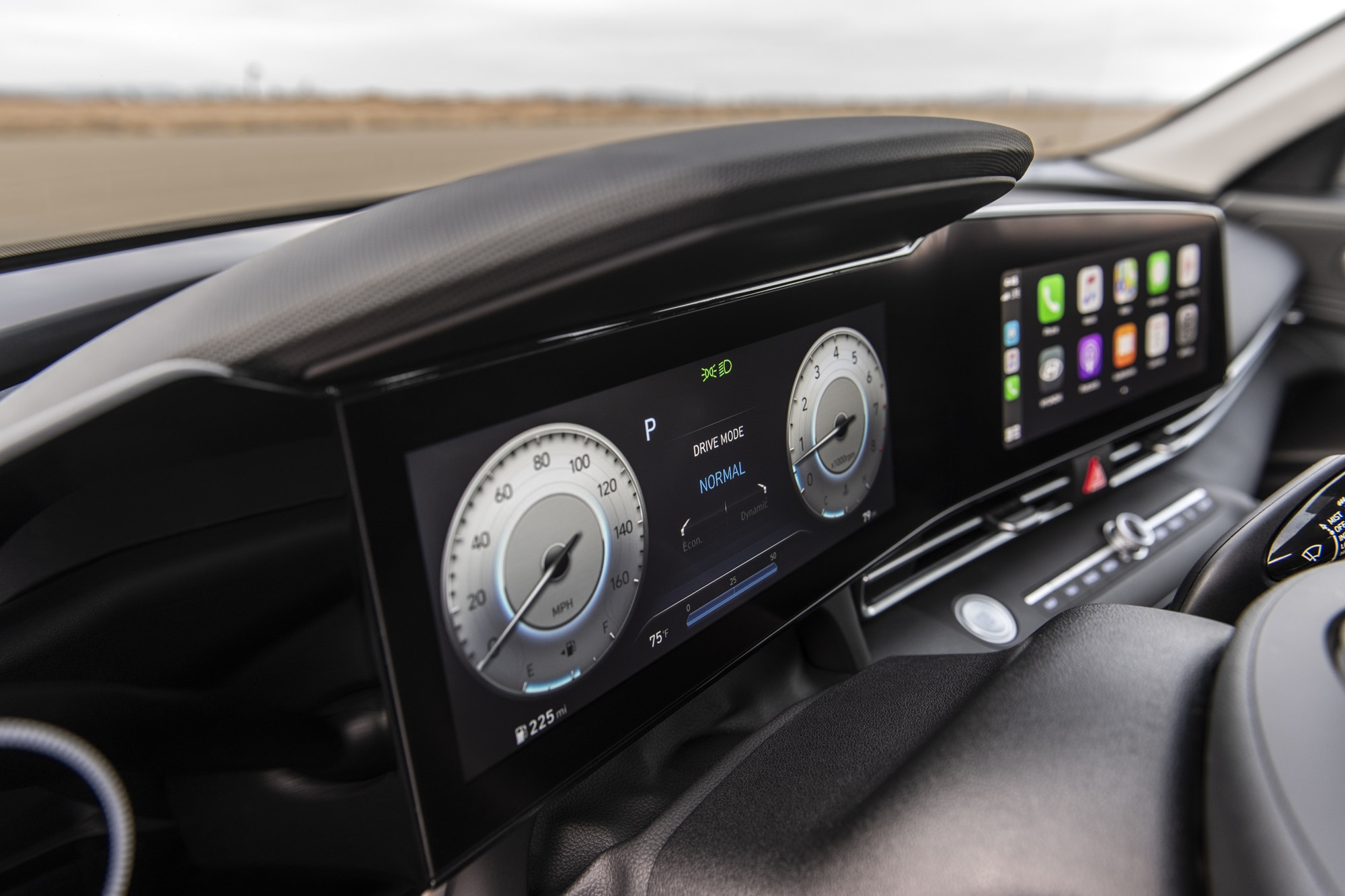How Do I Reset the Tire-Pressure Light in a Hyundai?
If that warning won't go away, you can force a reset.
 Hyundai
Hyundai
Article QuickTakes:
If you drive a Hyundai and the tire-pressure light pops up in the dash, you need to check your tires ASAP. It's possible there's a leak or a flat or the outside temperature has dropped low enough to condense the air inside the tire. Once you've solved the problem and confirmed your tires are fully inflated, that light should turn off on its own. If it doesn't, you'll need to reset the tire pressure light. Here's how to do it.
Step-by-Step Reset Instructions
Step 1: Before resorting to a manual reset, ensure your tires meet the PSI and then drive your vehicle at 50 mph for 10 minutes. This should allow the tire-pressure monitoring systems (TPMS) enough time to take a new reading and clear the light. If your Hyundai has a digital instrument cluster, you should be able to see the psi measurement for each tire.
Step 2: If this doesn't work, put the key in the ignition and turn it to the "On" position but do not start the car. If you have a push-button start, press the button without your foot on the brake pedal to accomplish the same thing. You may have to press it more than once.
Step 3: Locate the TPMS reset button. It's usually situated under or to the side of the steering wheel.
Step 4: Press and hold the reset button until the tire-pressure light blinks three times, then release it.
Step 5: Start the car. The sensor should refresh within 20 minutes.
Further Troubleshooting
If that doesn't do the trick, there are a few other things you can try.
Option 1: Inflate each tire to 3 psi above the recommended measurement, then fully deflate them. (It's a good idea to prop up the vehicle with a jack or jack stands for this). End by reinflating each tire to the correct psi.
Option 2: With the car off, open the hood and disconnect the battery cables (negative first) with a wrench. Turn the key in the ignition to the "On" position and honk the horn for three to five seconds to discharge any remaining power stored in the vehicle. Let the car sit for five minutes, then reconnect the battery (positive first).
Option 3: If none of that works and you're sure your tires are properly inflated, there's likely a problem with the tire-pressure monitoring system or your car’s battery. In either case, it’s probably time to take your Hyundai to a dealer or mechanic and get it checked.



